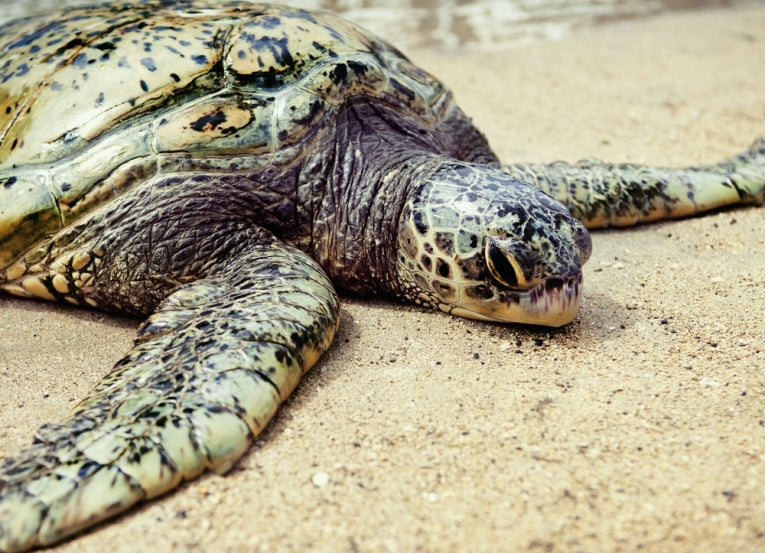There is a plethora of wildlife in Costa Rica. They have a problem however, that you won't find in any other nature reserve. Oryx, the international conservation journal has a significant report today by Diogo Verissimo. Tortuguero National Park is a bay for turtle conservation on the north-east coast of the country but nobody told the local wildlife.
The local jaguars have taken a liking to their fellow conserved species the green turtle. This is one of the biggest green turtle rookeries in the world, so obviously the reptiles have to be conserved. However the big cats are also "flagship conservation species" because they are highly endangered throughout Costa Rica and the whole continent.
The problem seems to have begun in 2003 when a study of the use of the beach habitat by both species was curtailed after just one year. No predation was significant seemingly before 1997. Two turtles were killed by jaguars prior to this according to records, but more and more are now being attacked.

The endangered jaguar, Panther onca, is responsible for 676 turtle deaths on a beach in Tortuguero National Park - Jaguar image via Shutterstock
This study, Jaguar Panthera onca predation of marine turtles: conflict between flagship species in Tortuguero, Costa Rica, by way of contrast, records a tripling of the kills between 2005 and 2010. With such a unique situation, the human influences control the problem, at least to an extent.
Jaguars have never been counted or studied carefully in the area, which is a serious omission. The turtles are numbered frequently but their confrontations with the predators have only recently been filmed by Diogo Verissimo.

On the top left, green turtle Chelonia mydas - top right leatherback turtle, Dermochelys coriacea, with typical signs of jaguar, Panthera onca, predation, and, below, camera-trap photographs of jaguars feeding on green turtles; All photographs are © and credited to GVI, Costa Rica
Many surveys were carried out, with only three months missed over the five year period. With an average of three surveys per month a huge total of 676 dead turtles were found. There were only four "non-green" turtles. (1 leatherback and 3 hawksbill), and many were killed with a bite to the neck where only the neck and flipper eaten. For each survey, the kills rose from <2 to >5 over the five years. Most were in the central area as there is a small town to the north and a plantation and a ranch in the south.
Jaguar predation on other prey needs to be studied just as the actual number of jaguars. Elsewhere, in Nicaragua for example, people eat the turtles, but here the large numbers of turtles' nests have been attacked by feral dogs.
Perhaps the influence of people on jaguar occurrence to the north and south could be brought to bear on the central area. Government and local communities, foreign donors and conservation managers need to understand how the destruction of the jaguars' habitat has influenced the dilemma they now find themselves in. If not then not one, but two conservation programmes could be at risk.










